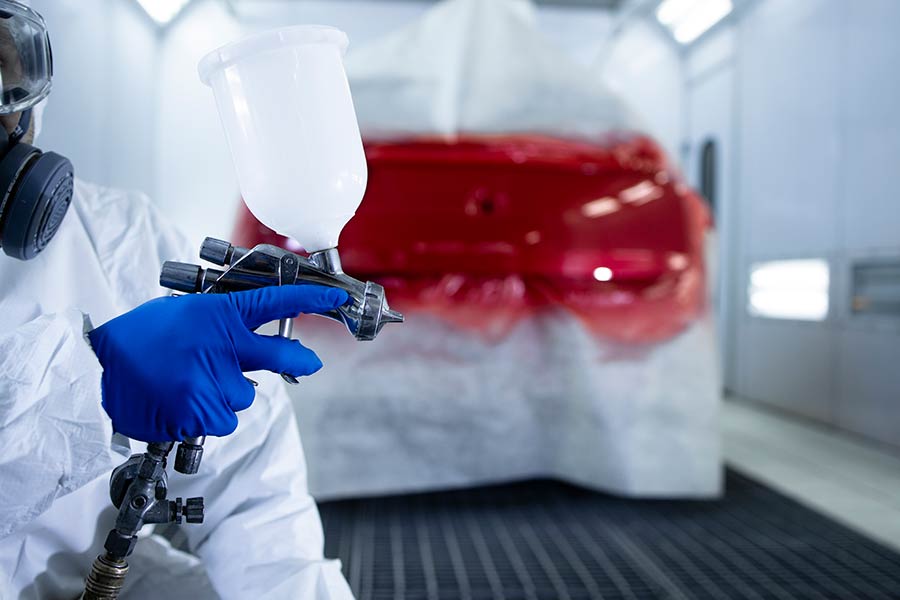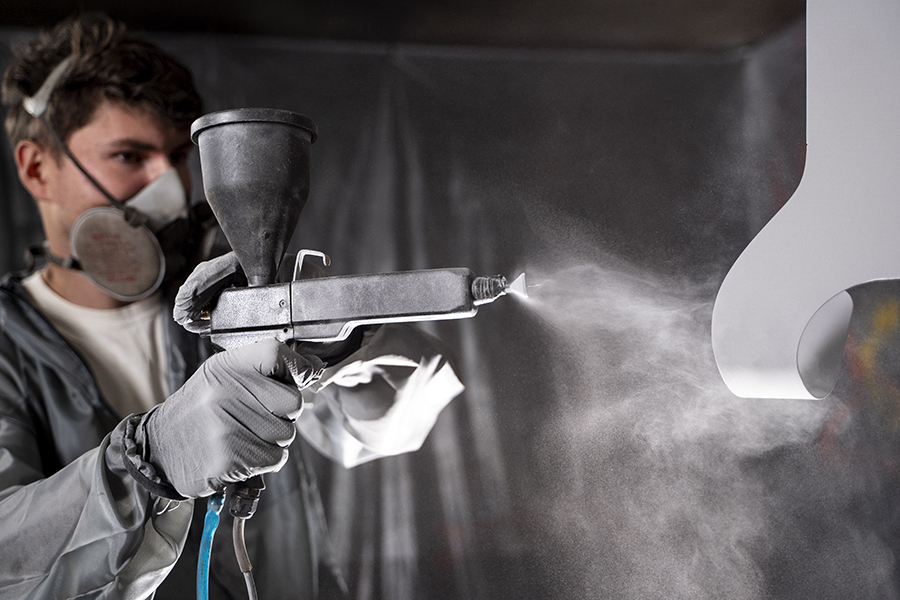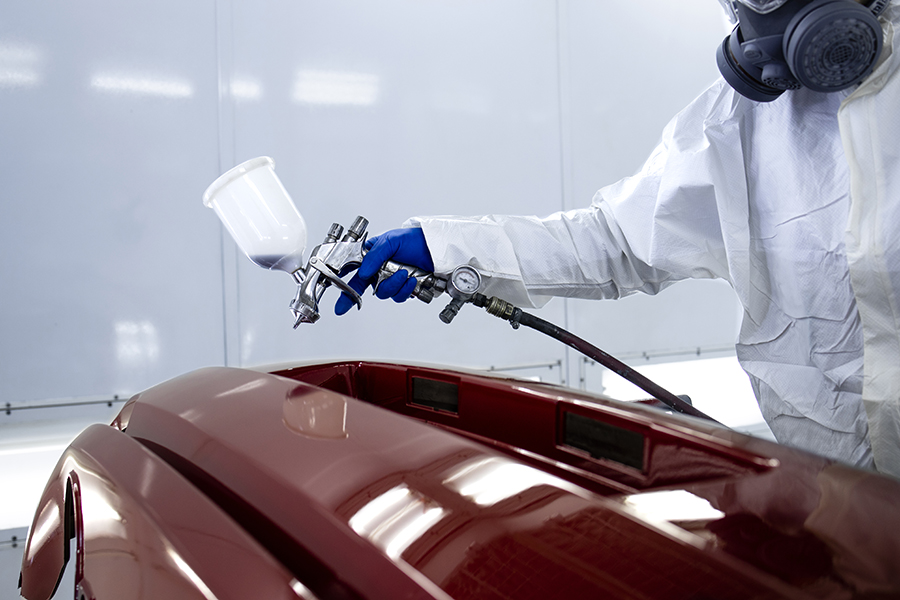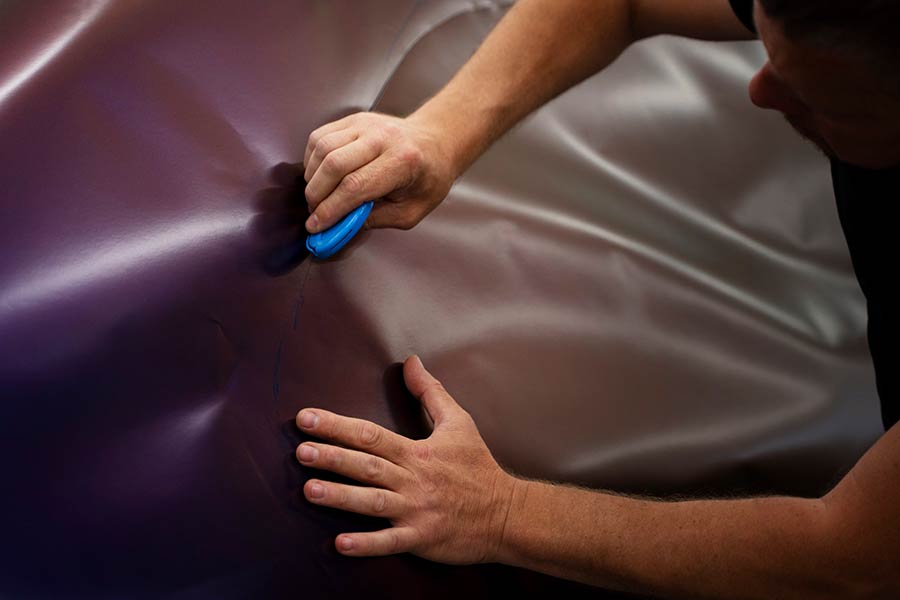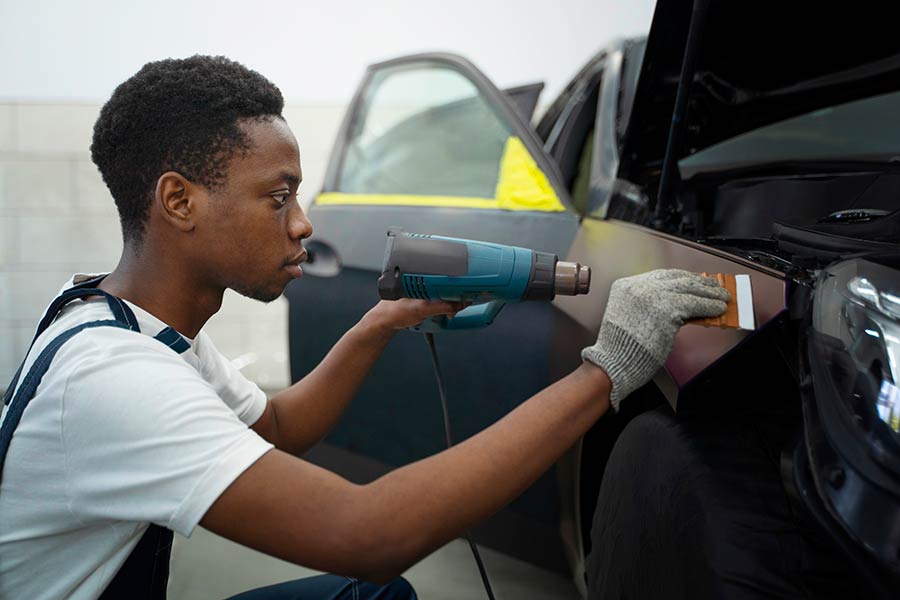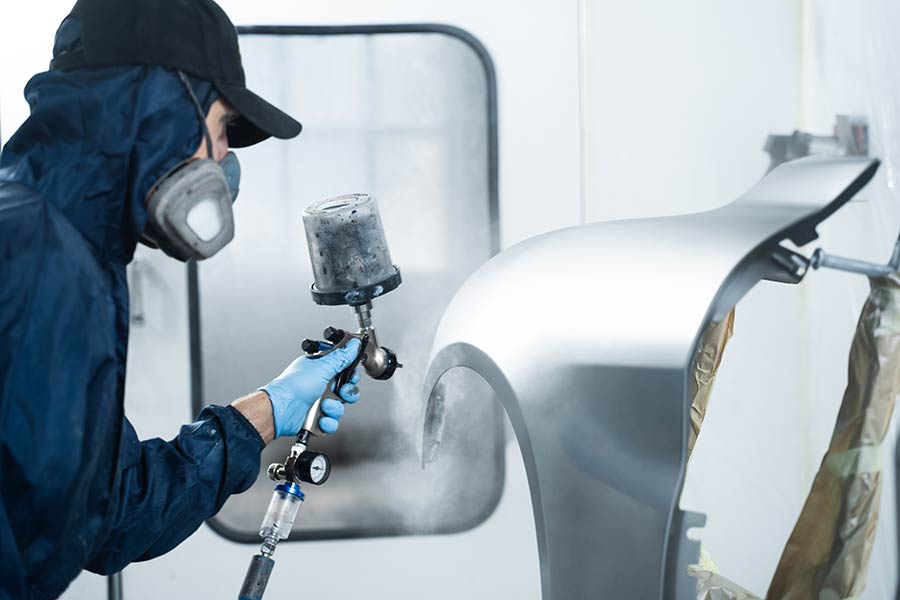Did you know that the average car paint repair costs between $500 to $2,500 at professional body shops?
That’s a lot of money for something you might be able to fix yourself. We’ve spent years working with car paint repairs, and here’s what we’ve learned: most car paint damage isn’t as complicated to fix as you might think.
Whether you’re dealing with tiny scratches from shopping cart bumps or deeper chips from highway debris, we’ve got you covered. Our team has tested dozens of repair methods, from quick DIY fixes to professional-grade techniques.
In this guide, we’ll show you exactly how to fix paint on your car, breaking down each step so you can save money and still get professional-looking results. We’ll cover everything from basic scratch repairs to dealing with serious paint damage.
Ready to learn how to make your car’s paint look new again? Let’s start with the basics.
Types of Car Paint Damage
I’ve seen countless cars come into my shop with paint damage, and I can tell you this: knowing what you’re dealing with is half the battle in fixing it. Let me walk you through the three main types of paint damage I see most often.
Surface Scratches and Scuffs
Surface scratches are the most common paint problems I work with. These are your everyday scrapes that don’t go deeper than the clear coat. Here’s a simple test I use: if you run your fingernail over the scratch and it doesn’t catch, it’s likely just a surface issue. Most surface scratches come from: * Car wash brushes * Shopping carts * Minor parking lot incidents * Improper washing techniques
Deep Paint Chips and Gouges
When I see deep paint damage, I know we’re dealing with something more serious. These injuries cut through to the base coat or even the metal beneath. The biggest red flag? Your fingernail catches in the scratch, or you can see different colored layers in the damaged area. Road debris and rocks are usually the culprits here, especially if you drive frequently on highways.
Clear Coat Peeling Issues
The clear coat is your car’s protective shield, and when it fails, it fails dramatically. I’ve noticed this happens more often on darker-colored cars, particularly those parked outside regularly. The clear coat starts looking cloudy or hazy before it begins peeling away like a bad sunburn. The sun’s UV rays are the main enemy here - they break down the bond between the paint and clear coat over time.
What makes this especially tricky is that once peeling starts, it spreads quickly. I’ve watched small areas of clear coat damage turn into major problems within months. The process speeds up even more in areas with intense sun exposure or frequent temperature changes.
Essential Paint Repair Tools
Let me share the tools I’ve found essential after years of fixing car paint damage. Having the right equipment makes all the difference between a professional finish and an amateur touch-up.
Professional-Grade Materials
I always start with high-quality paint application tools. A good spray gun paired with an air compressor is fundamental for larger areas. For smaller repairs, I rely on my dual-action sander and a set of aluminum-oxide sanding disks in different grits (180 to 2000). These help smooth the surface perfectly before painting.
I keep my paint mixing equipment clean and organized: measuring cups, paint strainers, and mixing boards are must-haves. For spot repairs, micro brushes and spreaders help me work with precision.
Must-Have Safety Equipment
Your health comes first. Here’s what I never work without: * Fresh air respirator system or multi-stage filter mask * Safety glasses with side protection * Paint suit to protect skin and clothing * Chemical-resistant gloves * Steel-toe boots with slip-resistant soles
Paint Matching Tools
Getting the right color match is crucial. I use professional color measurement tools that take the guesswork out of matching:
| Tool Type | Purpose |
|---|---|
| Spectrophotometer | Measures exact color values |
| Digital Color Reader | Identifies closest paint match |
| Paint Library Software | Stores and finds paint formulas |
The MetaVue color matching system has been a game-changer in my work. It can identify the three most dominant colors in multi-colored samples and handles everything from small chips to larger panels. For basic jobs, I use the i1 Paint handheld tool, which saves about 30 minutes per match compared to visual matching.
Remember, temperature affects paint application significantly. I always keep a digital thermometer in my workspace to monitor conditions - it helps me adjust my technique and paint mix for the best results.
DIY Paint Repair Steps
After years of fixing car paint, I can tell you the secret to a perfect repair job lies in the details. Let me show you exactly how to fix paint on your car like a professional.
Surface Preparation Methods
The first rule of paint repair is this: 90% of your success depends on preparation. Start by washing the damaged area with soap and water, then use denatured alcohol to remove any wax or residue.
Here are my tried-and-true preparation steps: * Clean the area with grease and wax remover * Sand with 220-grit paper for deep damage * Move to 400-grit for smoother results * Wipe clean with a tack cloth * Apply primer if metal is exposed
Paint Application Techniques
I’ve found that the right paint mix makes all the difference. Here’s my perfect ratio table:
| Component | Base Coat | Clear Coat |
|---|---|---|
| Paint | 2 parts | 1 part |
| Reducer | 1 part | 1 part |
| Hardener | 1 part | 1 part |
Start painting from the center of the damage, working outward in light, even coats. I always wait 10-15 minutes between coats. Remember: thin layers work better than thick ones.
Finishing and Blending Tips
The magic happens in the blending zone. I spray the new paint slightly beyond the repair area, gradually decreasing the amount as I move outward. This creates an invisible transition between old and new paint.
For the final touch, I wet-sand with 1500-grit paper, then move to 3000-grit for that mirror finish. A good buffing compound brings out the shine, making the repair spot vanish completely.
Pro tip: If you’re working outside, pick early morning or late afternoon hours when the temperature is stable. Hot sun can ruin even the most careful paint job.
Professional Repair Methods
When it comes to professional paint repair, I’ve worked with both traditional body shops and mobile services. Let me show you why professional repairs often deliver better results than DIY methods.
Body Shop Processes
Professional body shops use advanced technology that’s simply not available to the public. I’ve watched master technicians match colors with computer-controlled spectrophotometers that read paint colors with microscopic precision. The painting process happens in a controlled environment where:
- Temperature and humidity stay constant
- Dust and debris can’t contaminate the paint
- Special UV lamps speed up curing time
The results? A paint job that looks factory-fresh and lasts for years.
Mobile Repair Services
I’ve noticed a growing trend in mobile repair services, and the results are impressive. These professionals bring their expertise right to your driveway. The best mobile services use specialized trailers with:
| Equipment | Purpose |
|---|---|
| Mini spray booth | Controls overspray |
| Paint mixing station | Creates perfect matches |
| LED curing lights | Speeds up drying time |
What makes mobile services special? They focus on small-scale, non-collision repairs. Their specialized tools let them fix those persistent dings and scratches without the wait times of traditional body shops.
Cost Breakdown
Let me break down the typical costs I see in the industry. Professional paint repair prices vary based on damage extent:
-
Minor scratch repair: $150-$300 * Single panel work * Color matching included * Same-day service possible
-
Deep paint damage: $500-$800 * Multiple layer repair * Primer and paint work * Professional buffing
-
Full panel repaint: $1,000-$2,500 * Complete surface prep * Multiple paint layers * UV-resistant clear coat
Pro tip: Many shops offer warranties on their work. While professional repairs cost more upfront, they often save money in the long run by preventing rust and further damage.
Paint Protection After Repairs
Taking care of your car’s paint after repairs is just as important as the repair itself. I’ve learned this the hard way after seeing countless perfect paint jobs ruined by improper aftercare.
Sealant Application
The most common mistake I see is rushing to apply sealant. Here’s what I tell my clients: wait at least 60 days after paint repair before applying any sealant. The paint needs time to fully cure and bond with your car’s surface.
When you’re ready to apply sealant, pick a product that matches your needs:
| Sealant Type | Protection Duration | Best For |
|---|---|---|
| Synthetic | 6 months | Daily drivers |
| Ceramic | 2-5 years | Long-term protection |
| Natural | 3 months | Show cars |
Maintenance Schedule
I’ve developed this weekly care routine that works wonders:
- Week 1-4 after repair:
- No washing
- Remove bird droppings with plain water
-
Park in shade
-
Month 2-3:
- Gentle hand washing only
- No automatic car washes
- Light microfiber wiping
After 90 days, start your regular maintenance with mild car soap and soft microfiber cloths. I wash my clients’ cars every two weeks to keep the paint looking fresh.
Weather Protection
Living in different climates has taught me that weather protection isn’t optional - it’s mandatory. During the first 30 days after paint repair, your car’s new paint is most vulnerable.
The paint needs special attention in: * Hot weather: Park in covered areas * Cold conditions: Keep the car clean from road salt * Rainy seasons: Dry the surface after each rainfall
My top recommendation? Get a high-quality car cover. I’ve seen how it protects against UV rays, tree sap, and bird droppings. For extra protection, I suggest parking in a garage whenever possible.
Remember what I always say: the time you spend protecting your paint now saves you money on repairs later. A good paint protection routine doubles the life of your paint job.
Conclusion
Paint repair requires attention to detail, proper tools, and careful technique. Through my years of experience, I’ve seen both DIY enthusiasts and professionals achieve excellent results when following the right methods and safety protocols.
Many car owners can handle minor paint repairs themselves, saving hundreds of dollars. However, major damage needs professional attention - I recommend you Schedule Repair service if you spot deep scratches, large chips, or clear coat failure. Professional shops offer warranties and specialized equipment that protect your investment.
Paint protection remains critical after repairs. Regular maintenance, proper washing techniques, and weather protection will keep your car’s paint looking fresh for years. Remember, quality tools, careful preparation, and patience during the repair process make the difference between an obvious patch job and a flawless finish that matches your factory paint perfectly.
## FAQs
-
How much does professional car paint repair typically cost? Professional car paint repair costs can vary widely, typically ranging from $500 to $2,500 at professional body shops. The exact price depends on the extent of the damage and the type of repair needed. Minor scratch repairs can cost between $150-$300, deep paint damage repairs range from $500-$800, while a full panel repaint can cost $1,000-$2,500.
-
Can I fix car paint damage myself? Yes, many minor paint damages can be fixed at home, especially surface scratches and small scuffs. However, for deep paint chips, gouges, or clear coat peeling issues, professional help might be necessary. DIY repairs require proper tools, materials, and techniques to achieve a professional-looking result.
-
What are the essential tools needed for DIY car paint repair? Essential tools for DIY car paint repair include sandpaper of various grits, paint matching tools, a spray gun with an air compressor (for larger areas), or touch-up brushes for smaller repairs. Safety equipment such as a respirator, safety glasses, and protective clothing are also crucial. For precise work, you’ll need measuring cups, paint strainers, and mixing boards.
-
How long should I wait before applying sealant after a paint repair? It’s recommended to wait at least 60 days after a paint repair before applying any sealant. This waiting period allows the paint to fully cure and bond with your car’s surface. Rushing to apply sealant too soon can interfere with the curing process and potentially damage the new paint job.
-
What’s the best way to protect my car’s paint after a repair? To protect your car’s paint after a repair, follow these steps: - Avoid washing the car for the first 4 weeks - Park in shaded areas to protect from UV rays - After 90 days, start regular maintenance with mild car soap and soft microfiber cloths - Consider using a high-quality car cover for additional protection - Park in a garage whenever possible to shield from various weather conditions
-
How can I tell if my car has surface scratches or deep paint damage? You can differentiate between surface scratches and deep paint damage with a simple fingernail test. If you run your fingernail over the scratch and it doesn’t catch, it’s likely just a surface scratch. If your fingernail catches in the scratch or you can see different colored layers in the damaged area, you’re dealing with deeper paint damage.
-
What causes clear coat peeling and how can it be prevented? Clear coat peeling is often caused by prolonged exposure to UV rays, which break down the bond between the paint and clear coat over time. It’s more common on darker-colored cars parked outside regularly. To prevent clear coat peeling, park in shaded areas when possible, apply UV-protective sealants, and maintain a regular washing and waxing schedule.
-
Are mobile repair services as effective as traditional body shops? Mobile repair services can be just as effective as traditional body shops, especially for small-scale, non-collision repairs. They use specialized equipment and focus on specific types of damage, often providing convenient, same-day service. However, for extensive damage or full repaints, a traditional body shop might be more suitable due to their controlled environment and advanced equipment.
